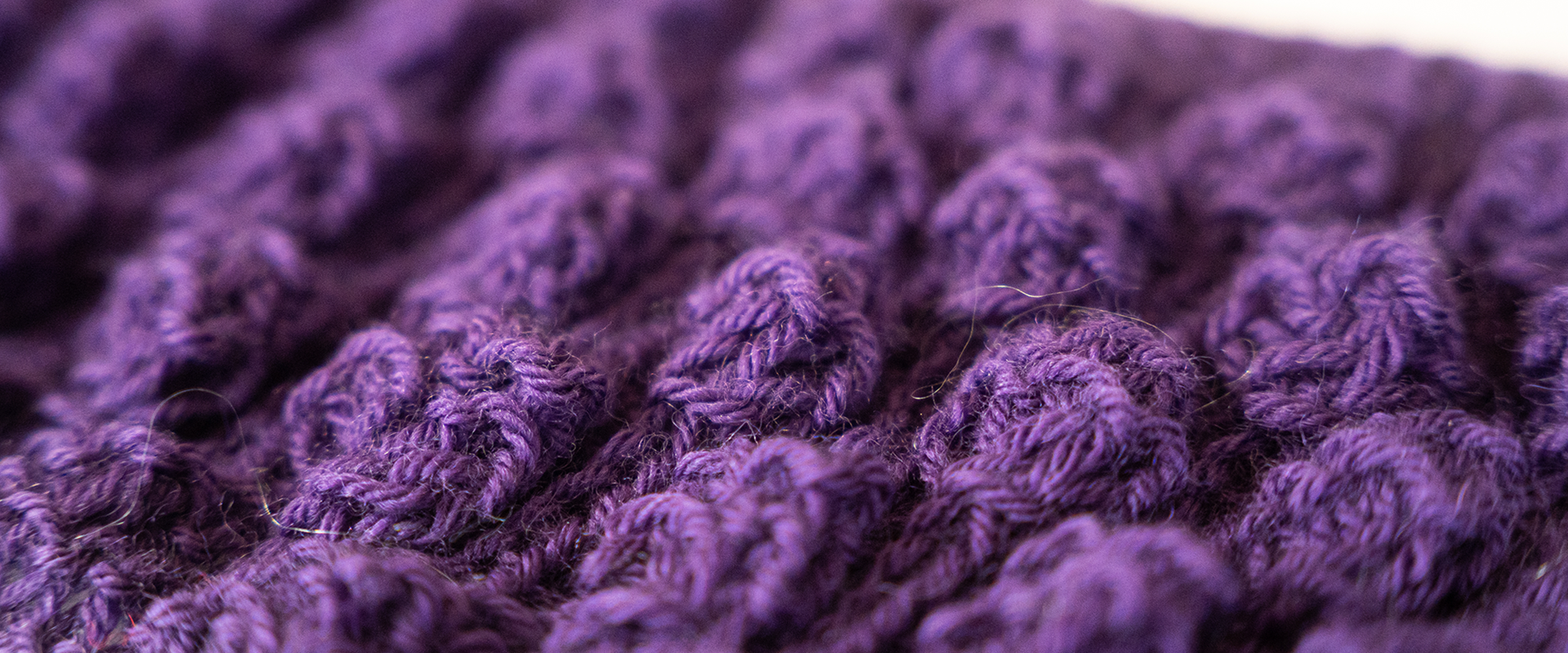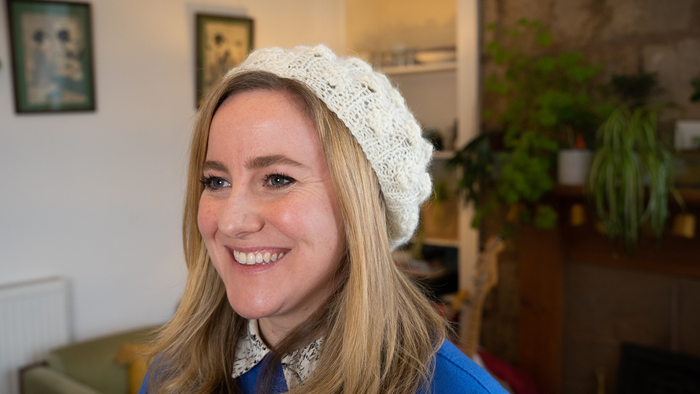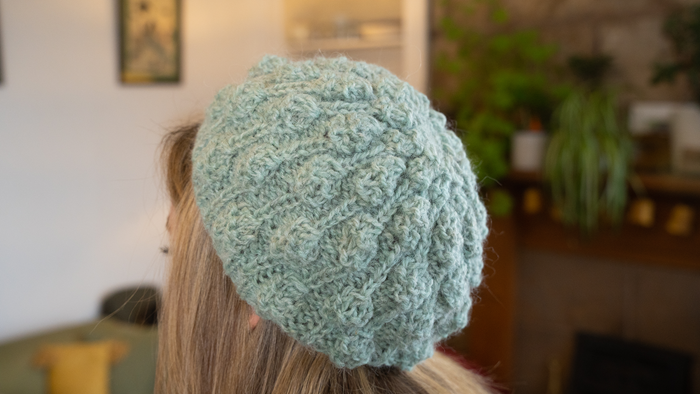Key in a search term below to search our website.
Key in a search term below to search our website.

This purple sample was made by Veronica Leach, a volunteer knitter part of the Fleece to Fashion project.
Margaret Klein was a skilled hand knitter and managed the knitwear arm of Bernat Klein Ltd., developing intricate patterns to show off the company’s vibrantly coloured yarns.
We are delighted to offer you the chance to knit your own bubble beret by following Margaret Klein’s original design and the following video tutorial.
Don’t forget to share your finished berets with us via our social media channels.
Dr Elaine Hunter (University of Glasgow) talks you through the pattern in the video below. Follow along and knit your own Bubble Beret (or just sit back as Elaine's dulcet tones relax and comfort you).

Share your creations online using the hashtag #KnitMargaretKlein
In the early 1960s, Bernat Klein Ltd. produced ground-breaking textiles that graced the catwalks of Paris couturiers such as Chanel, Dior and Yves Saint Laurent. The innovative yarns used to create these textiles were subsequently adapted as yarns for handknitting.
Margaret Klein, a skilled hand knitter, developed a series of patterns to showcase these vibrant yarns. They were published with stylish covers and sold commercially. When the company transitioned into ready to wear fashion, Margaret designed knitting patterns and managed a team of outworkers across Scotland.

This green beret was made by Mary McAleese, a volunteer knitter part of the Fleece to Fashion project.
Due to the structure of the company, Margaret Klein’s creative role within the business has been largely overlooked. The exhibition Bernat Klein: Design in Colour presented an opportunity for us to redress this imbalance.
We worked closely with the project team and volunteers at University of Glasgow to investigate how these patterns were created and disseminated. We would like to thank the volunteers for allowing us to show images of their own bubble berets from the project.
We would like to thank the Klein Family and ‘Fleece to Fashion: Economies and Cultures of Knitting in Modern Scotland’ at the University of Glasgow for their assistance with this project.